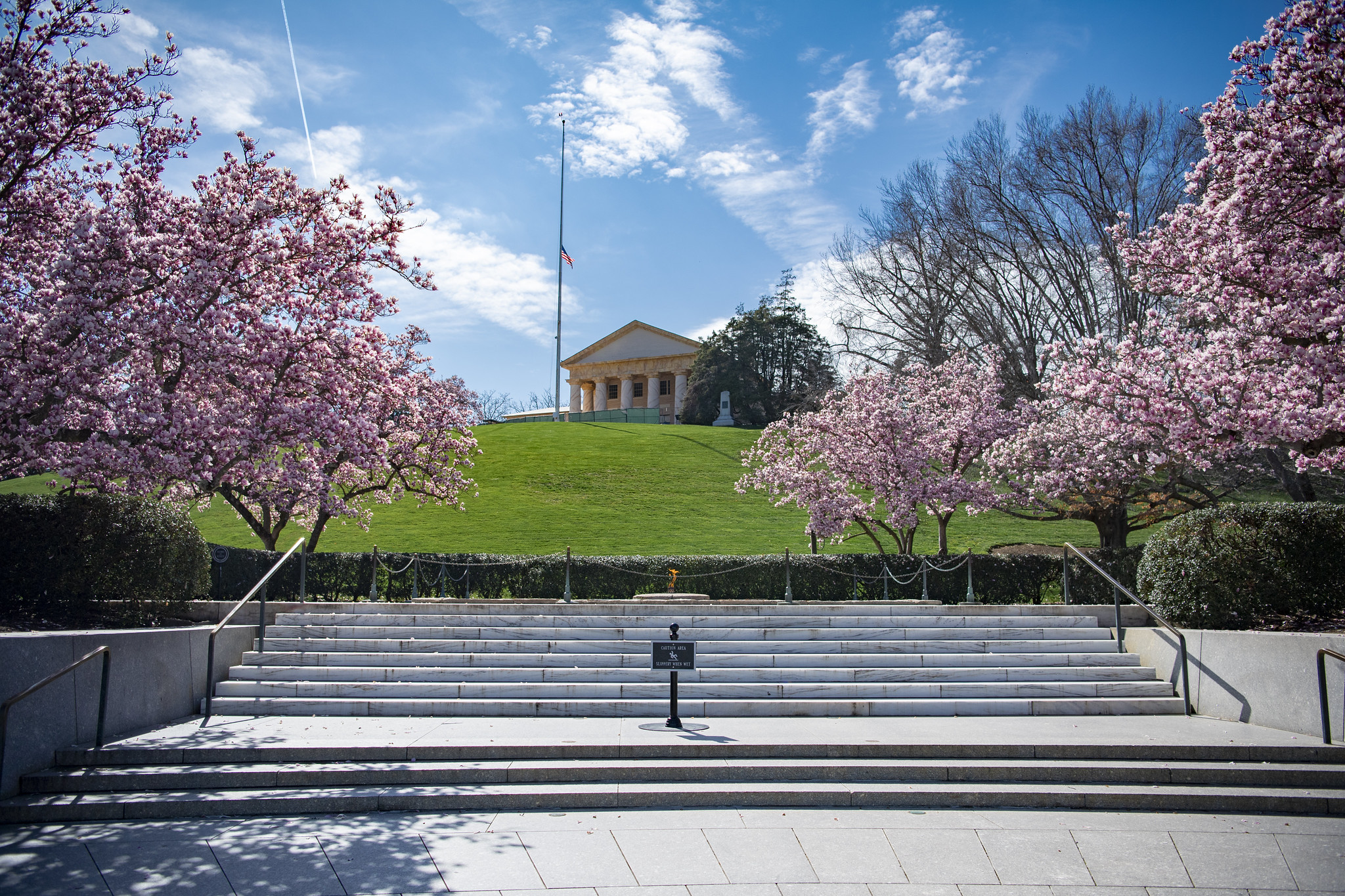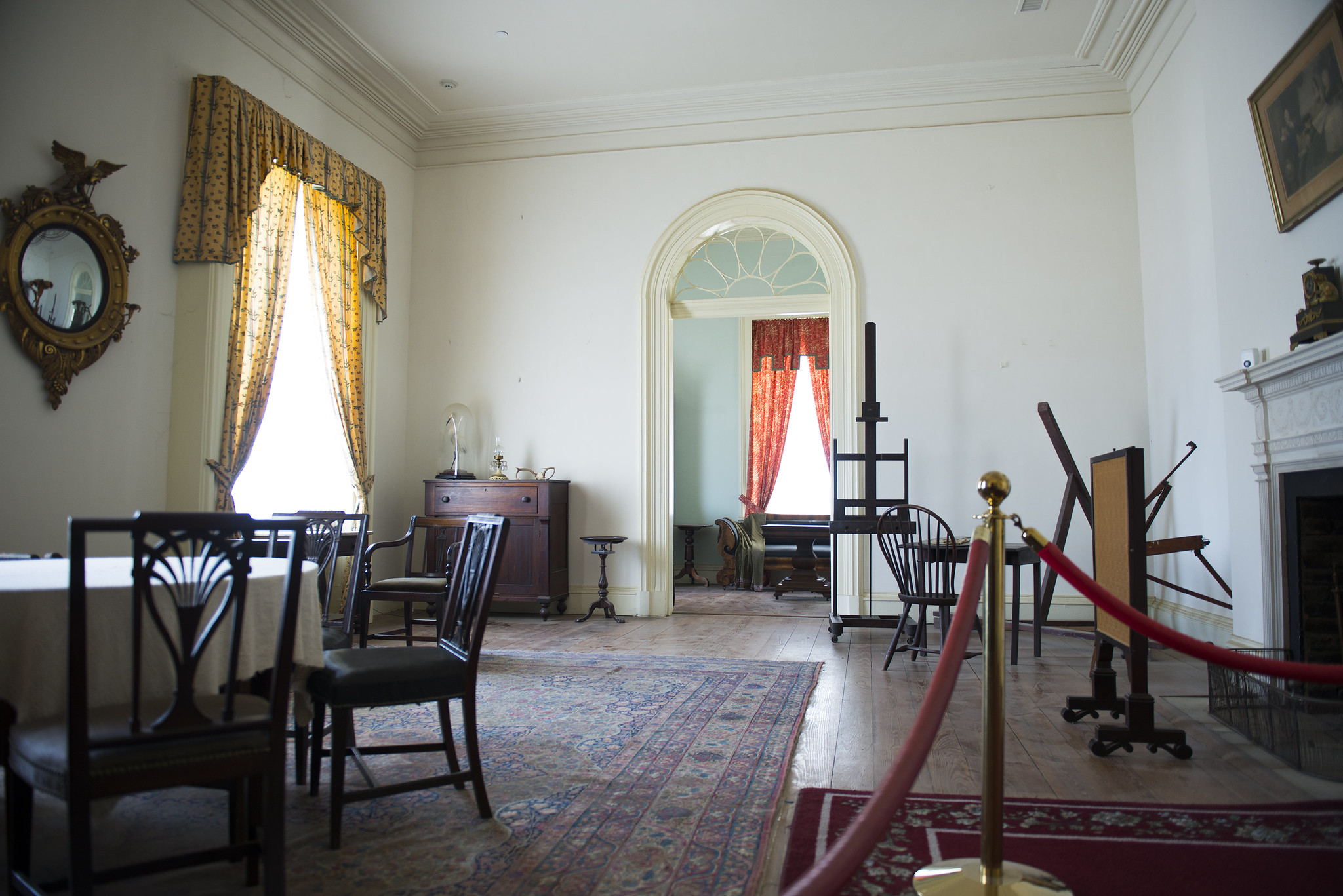Arlington House, The Robert E. Lee Memorial

Arlington House, with the gravesite of President John F. Kennedy in the foreground, March 2020.
Arlington House, constructed between 1802 and 1818, was the nation's first memorial to George Washington. In 1778, John Parke Custis—the son of Martha Washington and her first husband, Daniel Parke Custis—purchased 1,100 acres of land in northern Virginia, on rolling hills overlooking Washington, D.C. In 1802, John Parke Custis's son, George Washington Parke Custis (the first president's step-grandson), inherited the property, then known as Mount Washington. Custis decided to construct a Greek Revival-style mansion there as his home and a place to display his large collection of George Washington heirlooms and memorabilia such as furniture, silver, china and family portraits. The estate was a working plantation, and the mansion, called Arlington House, was built by enslaved African Americans. George Washington Parke Custis and his wife, Mary Lee Fitzhugh, lived at Arlington House until their deaths in 1857 and 1853, respectively. They are buried in what is now Section 13 of Arlington National Cemetery.
The Custis's only child, Mary Anna Randolph Custis, married her childhood friend and distant cousin, Robert E. Lee, in June 1831. A West Point graduate and the son of a three-term Virginia governor, Robert E. Lee commanded the Confederate Army during the Civil War. The Lees inherited the Custis estate in 1857 — including 196 enslaved persons, who lived and worked on the plantation.
After Virginia seceded from the United States on May 24, 1861, the Lees left Arlington House, never to return. The U.S. Army then occupied their estate, located on strategic high ground across from the nation's capital, as a camp and headquarters. U.S. troops constructed forts on the property, including Fort Whipple (now Fort Myer) and Fort McPherson (now Section 11). Because Mrs. Lee failed to pay taxes in person, as then required by law, the federal government confiscated the estate, purchasing it on January 11, 1864 "for Government use, for war, military, charitable, and educational purposes."

Meanwhile, the war's mounting human toll had overwhelmed the capacity of cemeteries in the D.C. area. Brigadier General Montgomery C. Meigs, quartermaster general of the U.S. Army, authorized military burials on the Arlington property — the presence of graves, he believed, would deter the Lees from ever returning. On May 13, 1864, Private William Christman became the first soldier to be buried at Arlington, and on June 15, 1864, the Army formally designated 200 acres of the property as a military cemetery. Meigs himself was later buried within 100 yards of Arlington House, along with his wife, father and son.
Throughout the war, the Arlington estate also supported thousands of African Americans fleeing enslavement in the South. On December 4, 1863, the federal government dedicated Freedman's Village, a planned community for freed slaves on the southern portion of the property. Freedman's Village grew to a community of 1,500, with a hospital, two churches, schools and a home for the elderly. Freed African Americans lived and farmed there until 1900, when the government closed Freedman's Village and incorporated the land into Arlington National Cemetery.
Neither Robert E. Lee nor his wife, as title holder, ever attempted to recover control of Arlington House. In 1874, Lee's eldest son, George Washington Custis Lee, sued the U.S. government for the return of the Arlington property, claiming that it had been illegally confiscated. In December 1882, the Supreme Court ruled in Lee's favor. A few months later, in March 1883, the federal government purchased the property from Lee for $150,000 (over $4 million today), and Arlington National Cemetery continued its mission as a burial ground for U.S. service members and their families.
Learn more:
• Arlington House (National Park Service)
• History of Arlington National Cemetery
• Freedman's Village
• Section 27